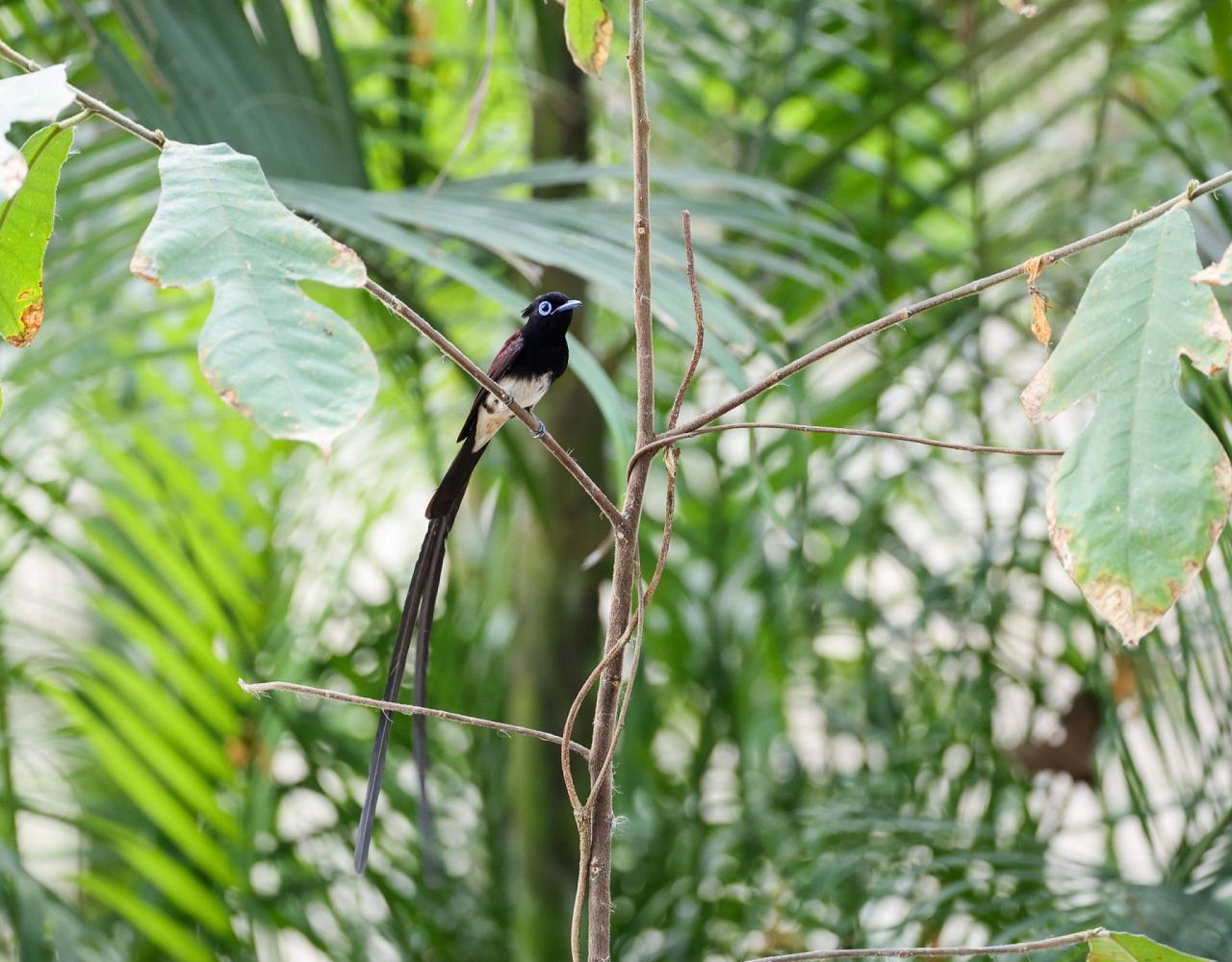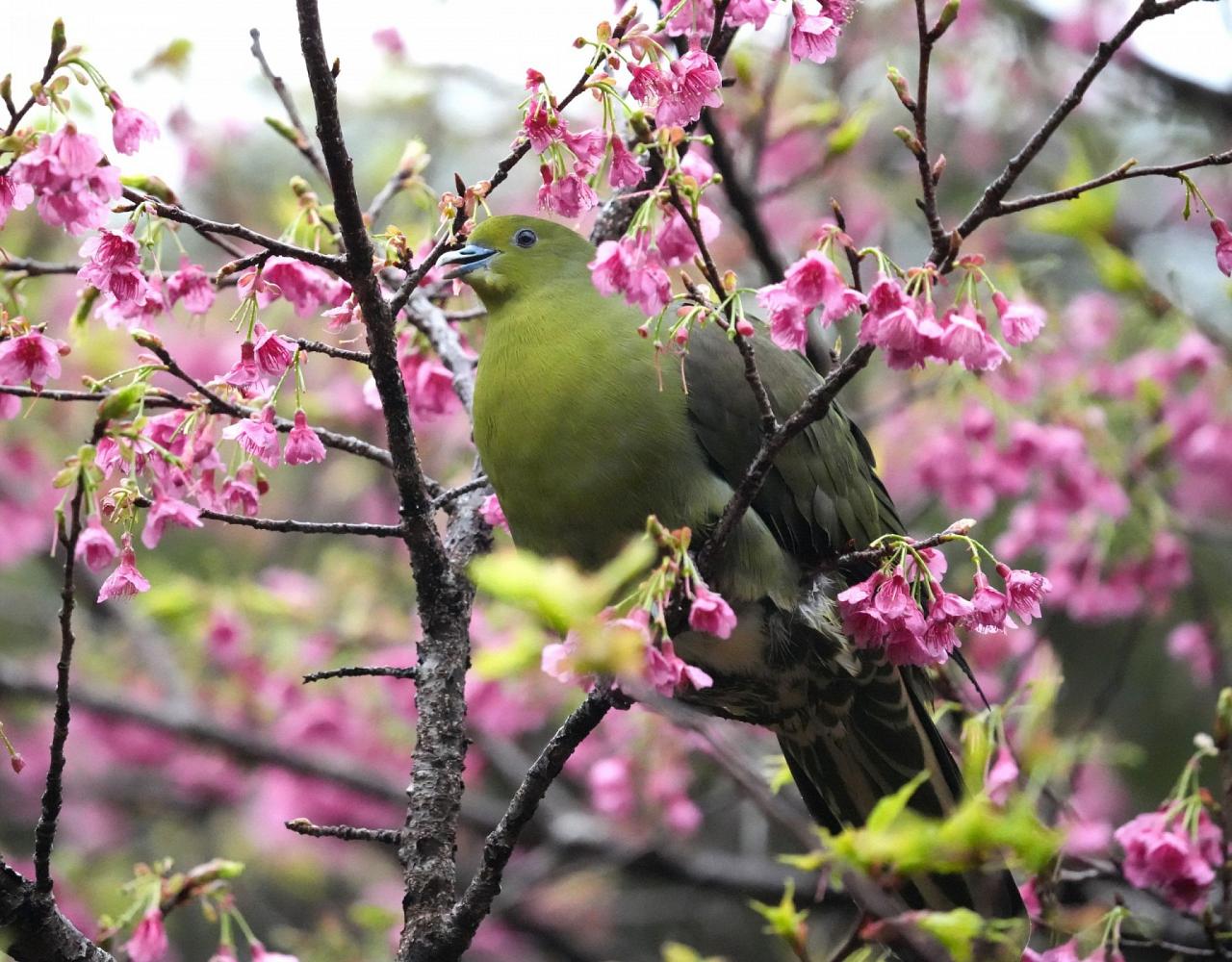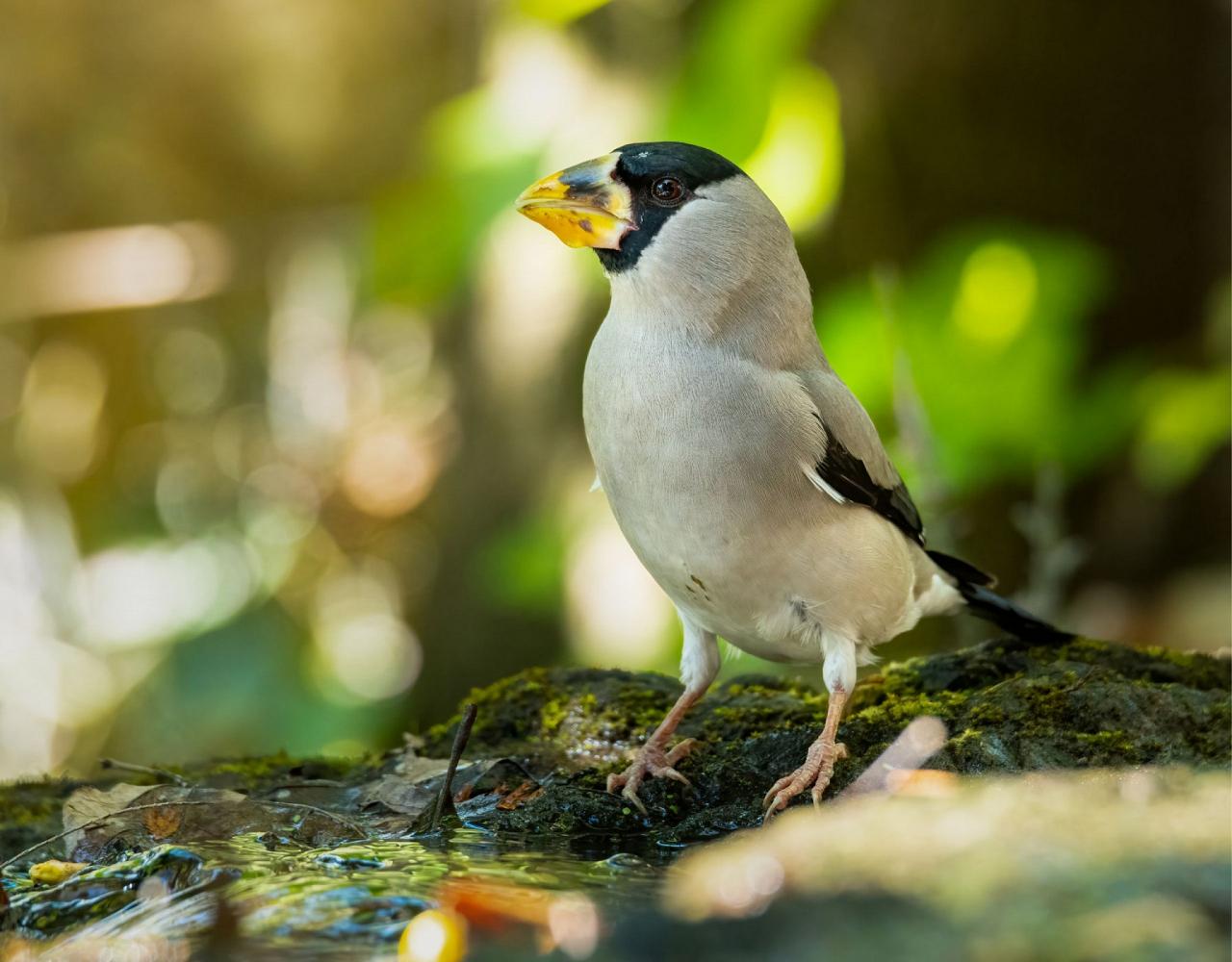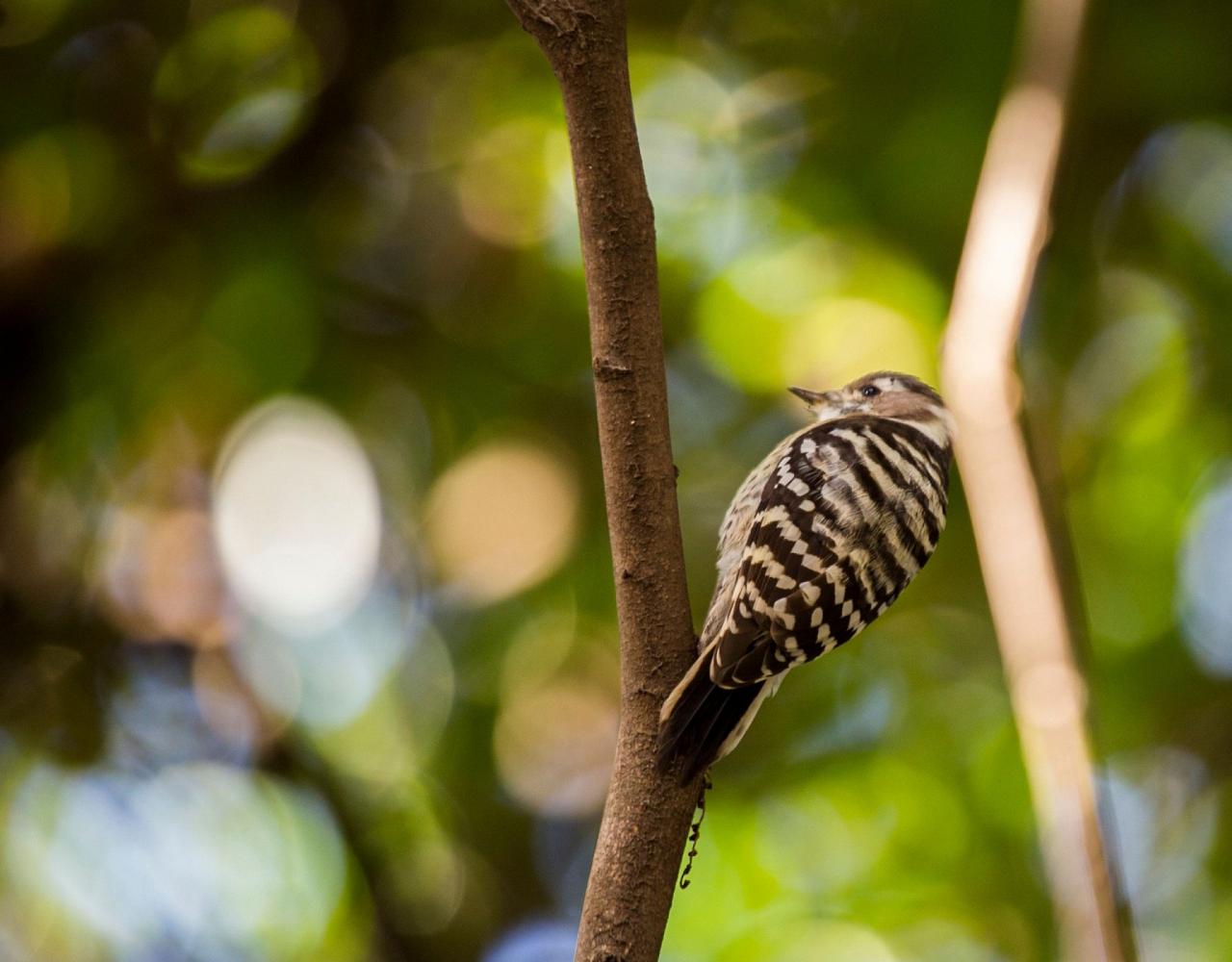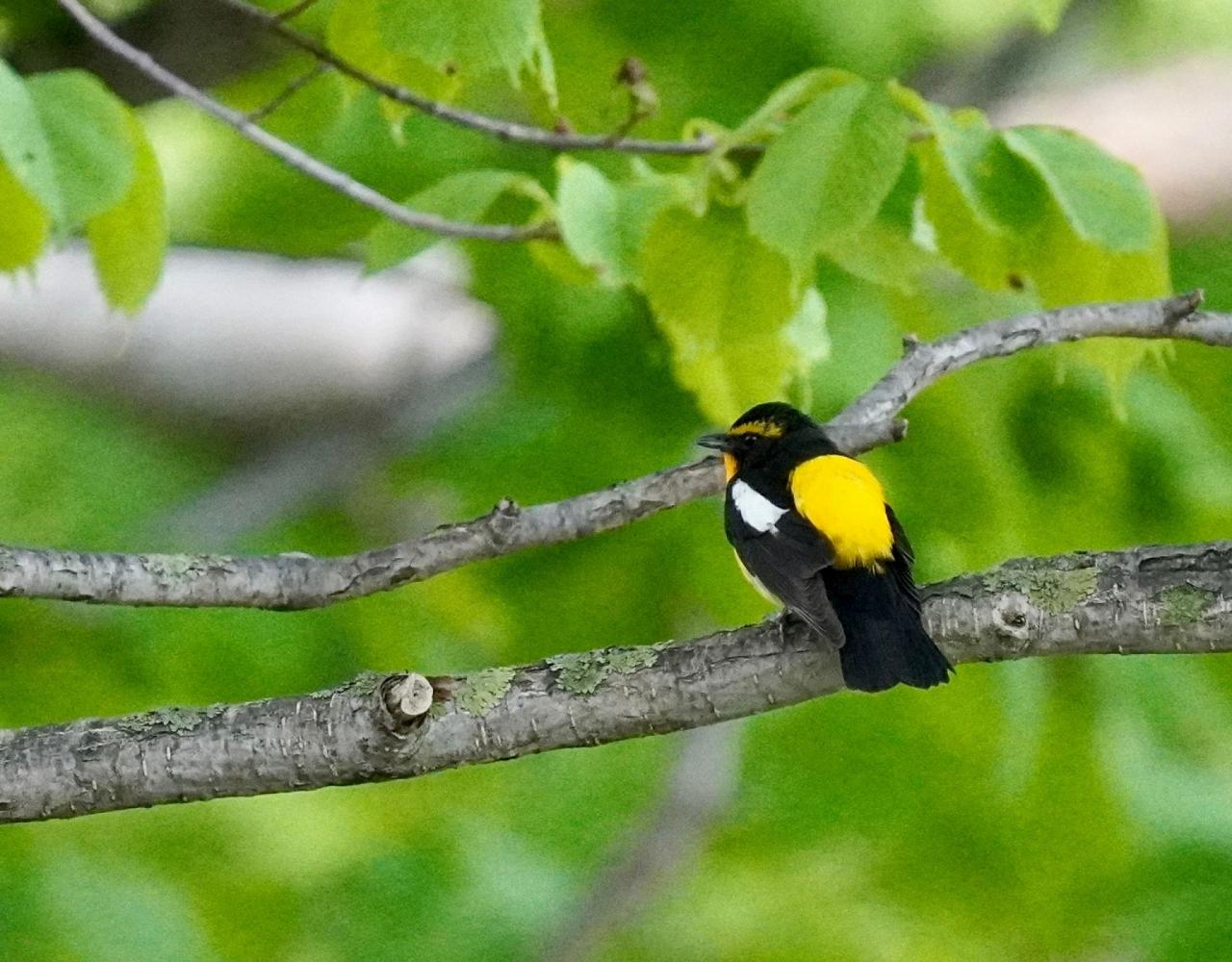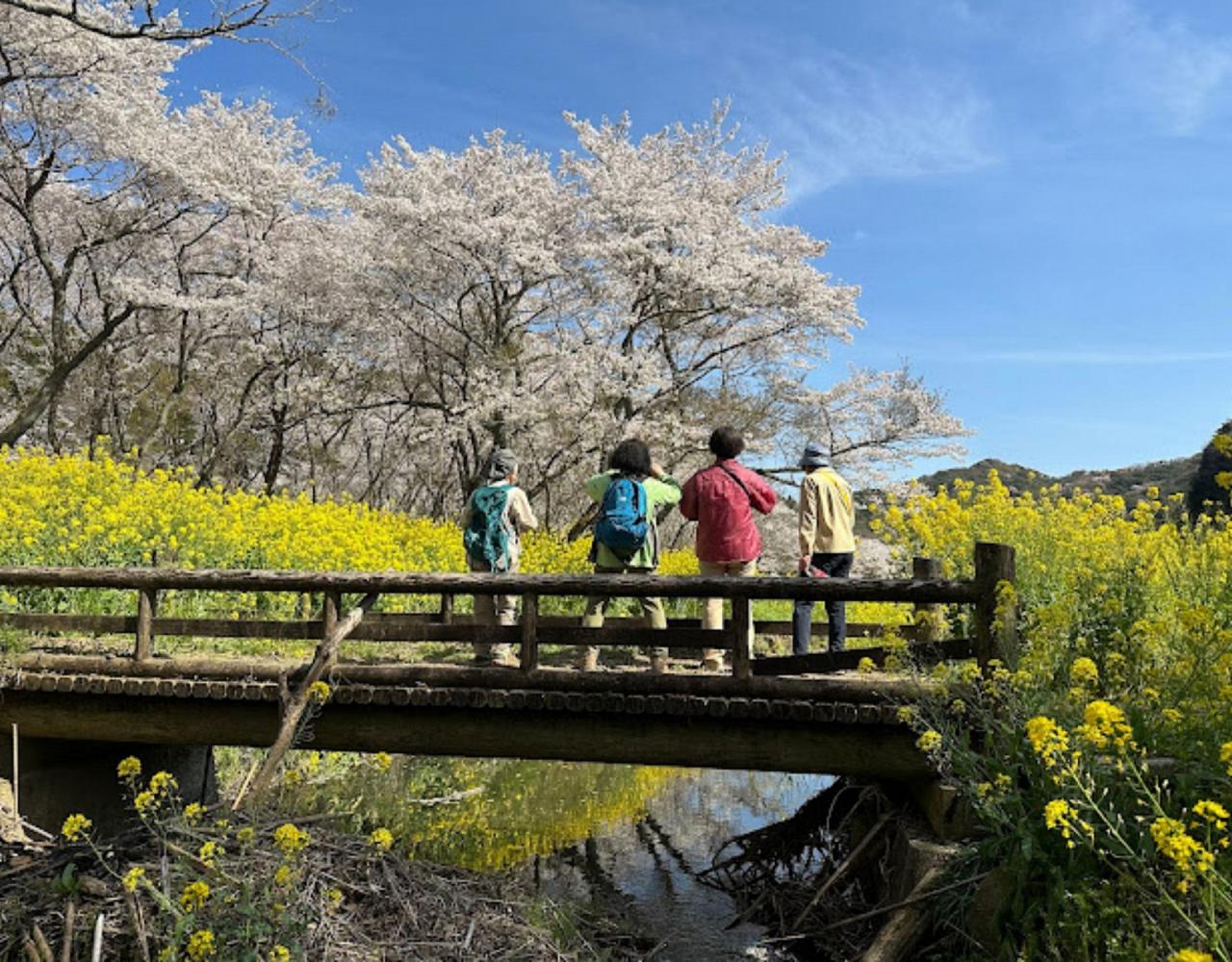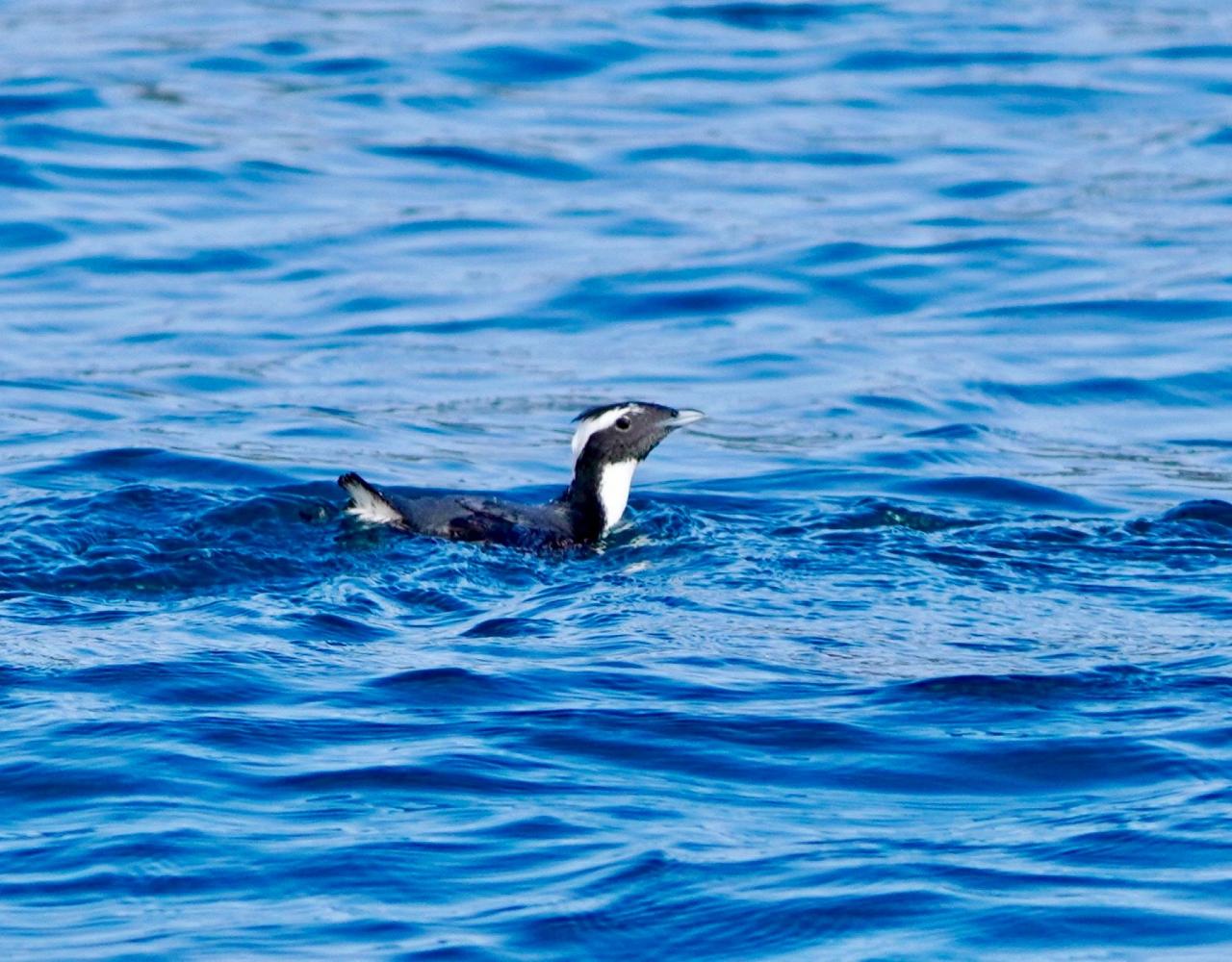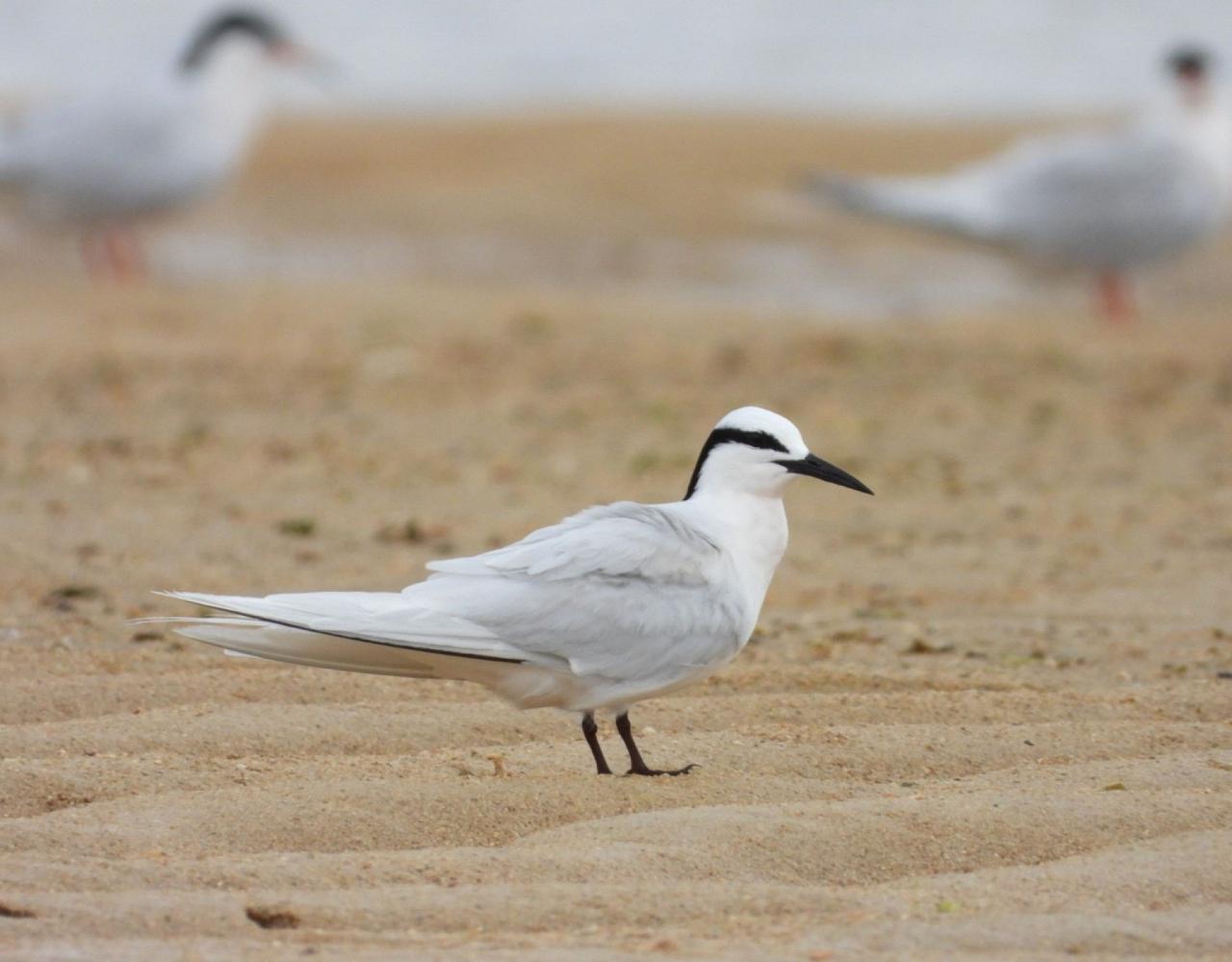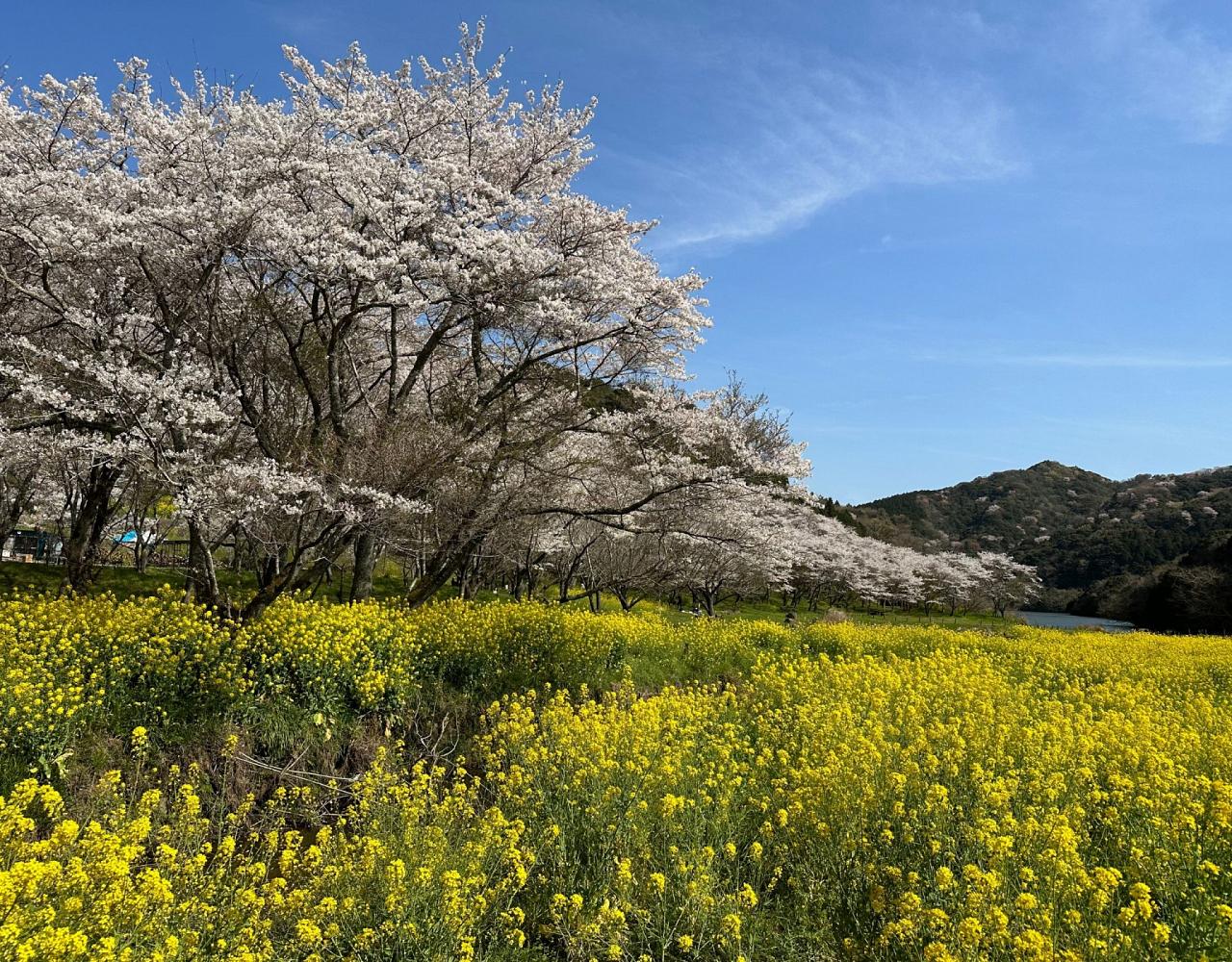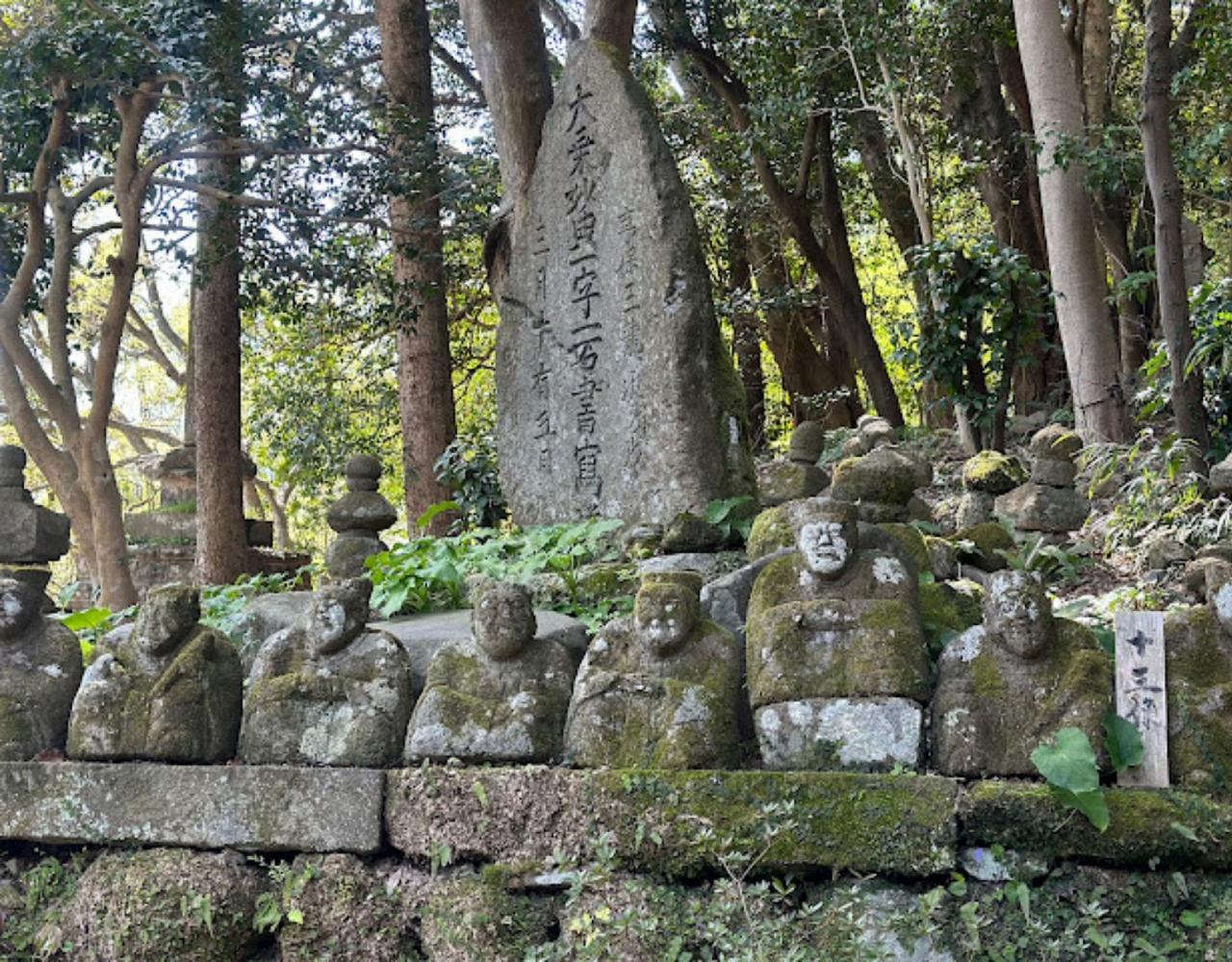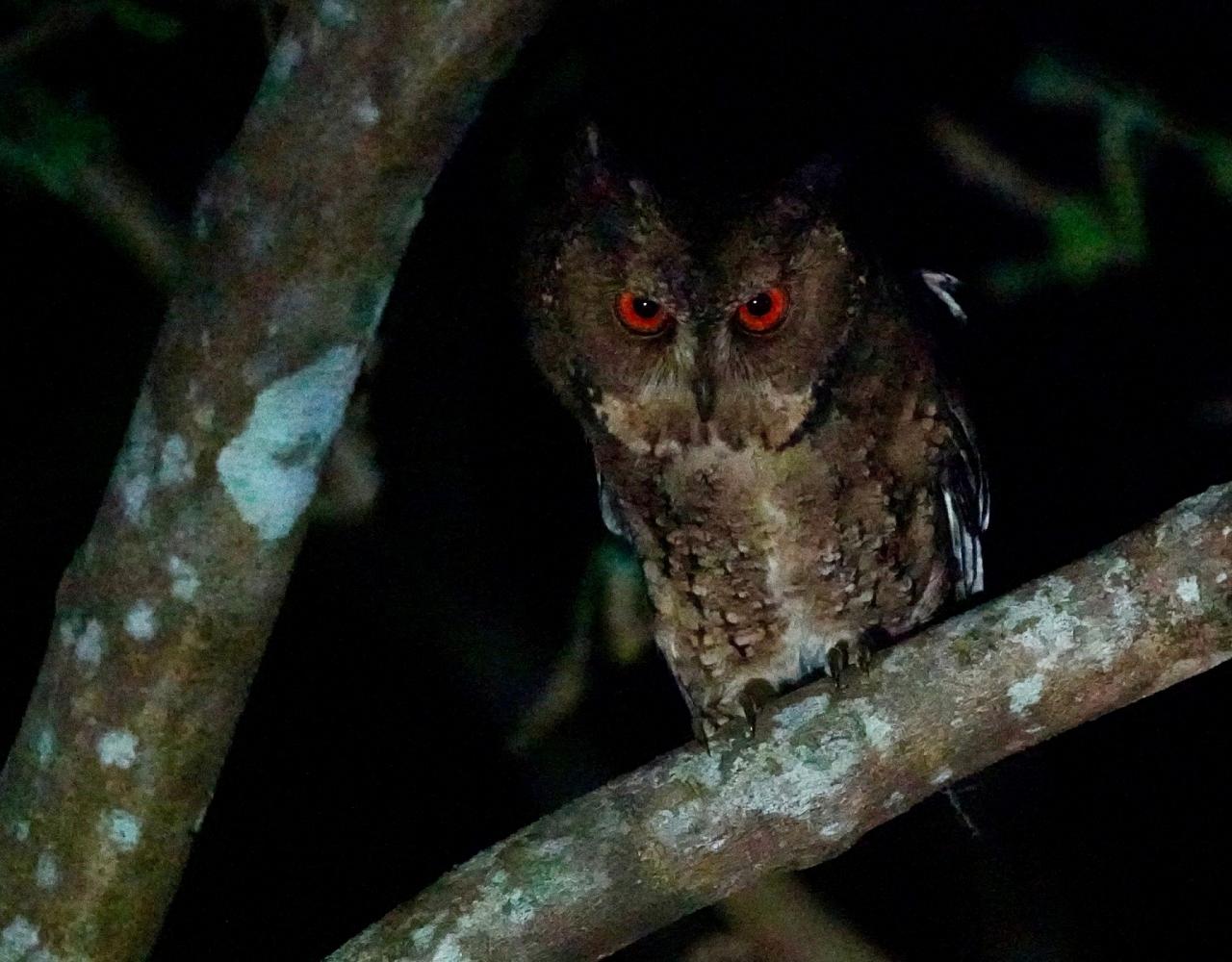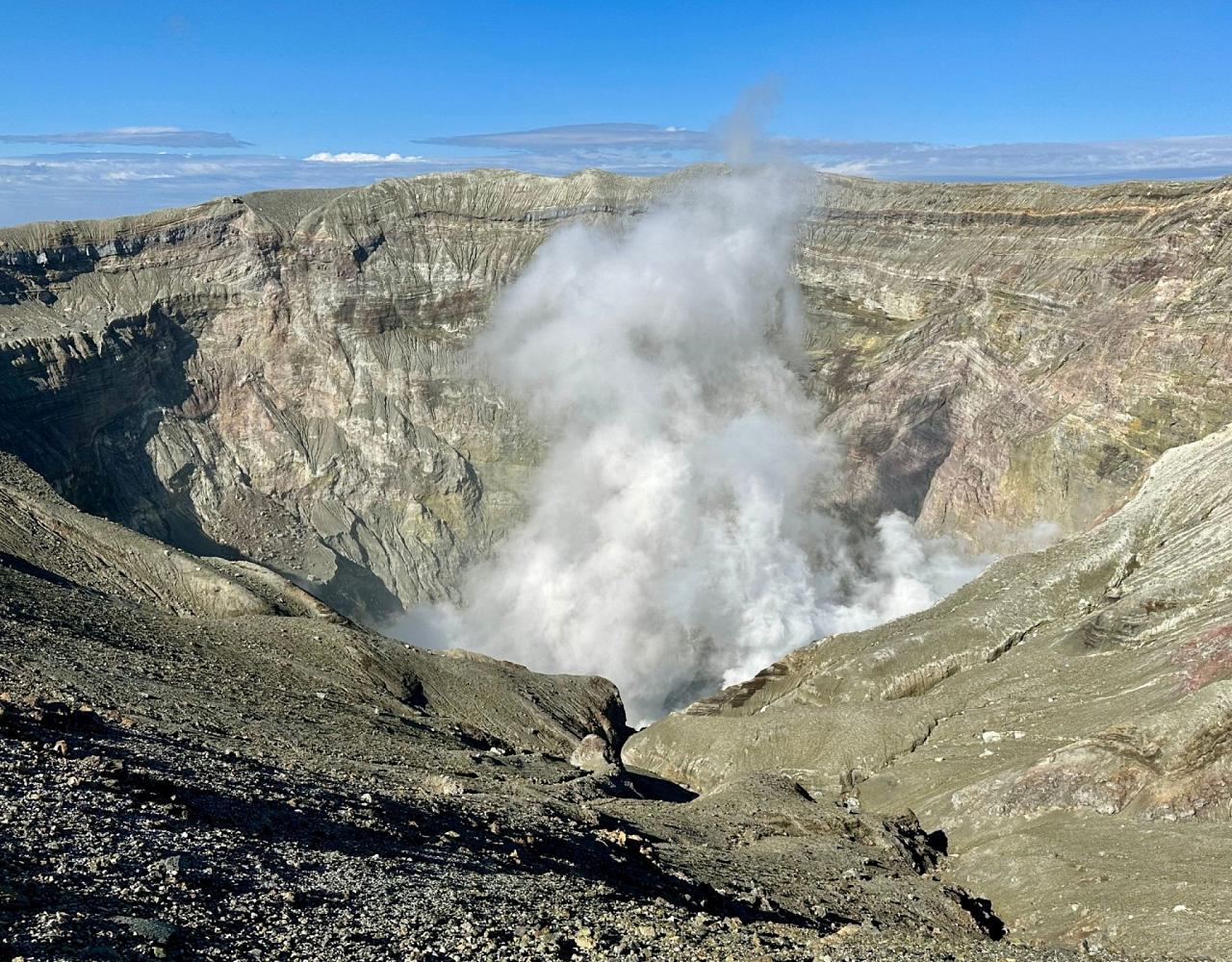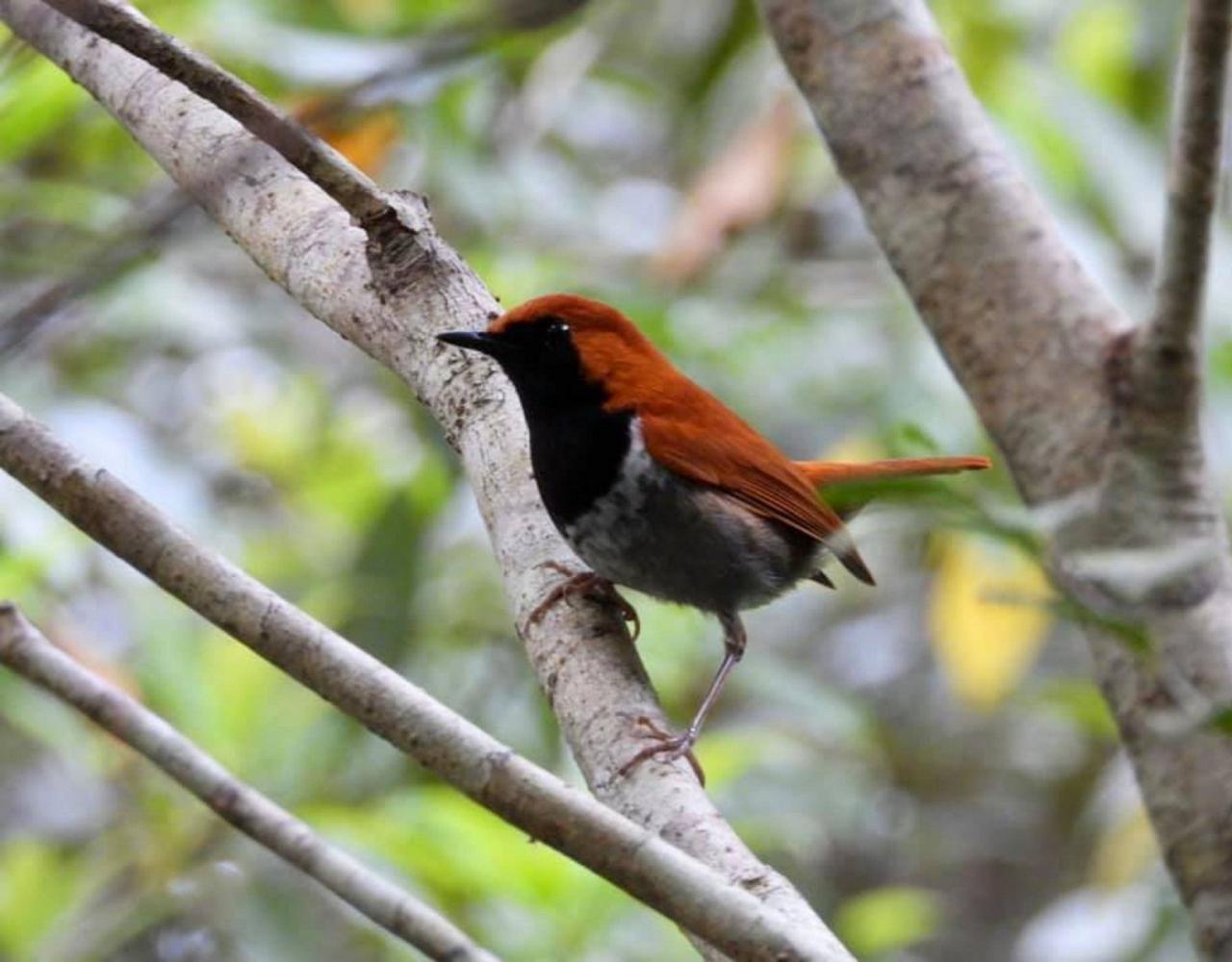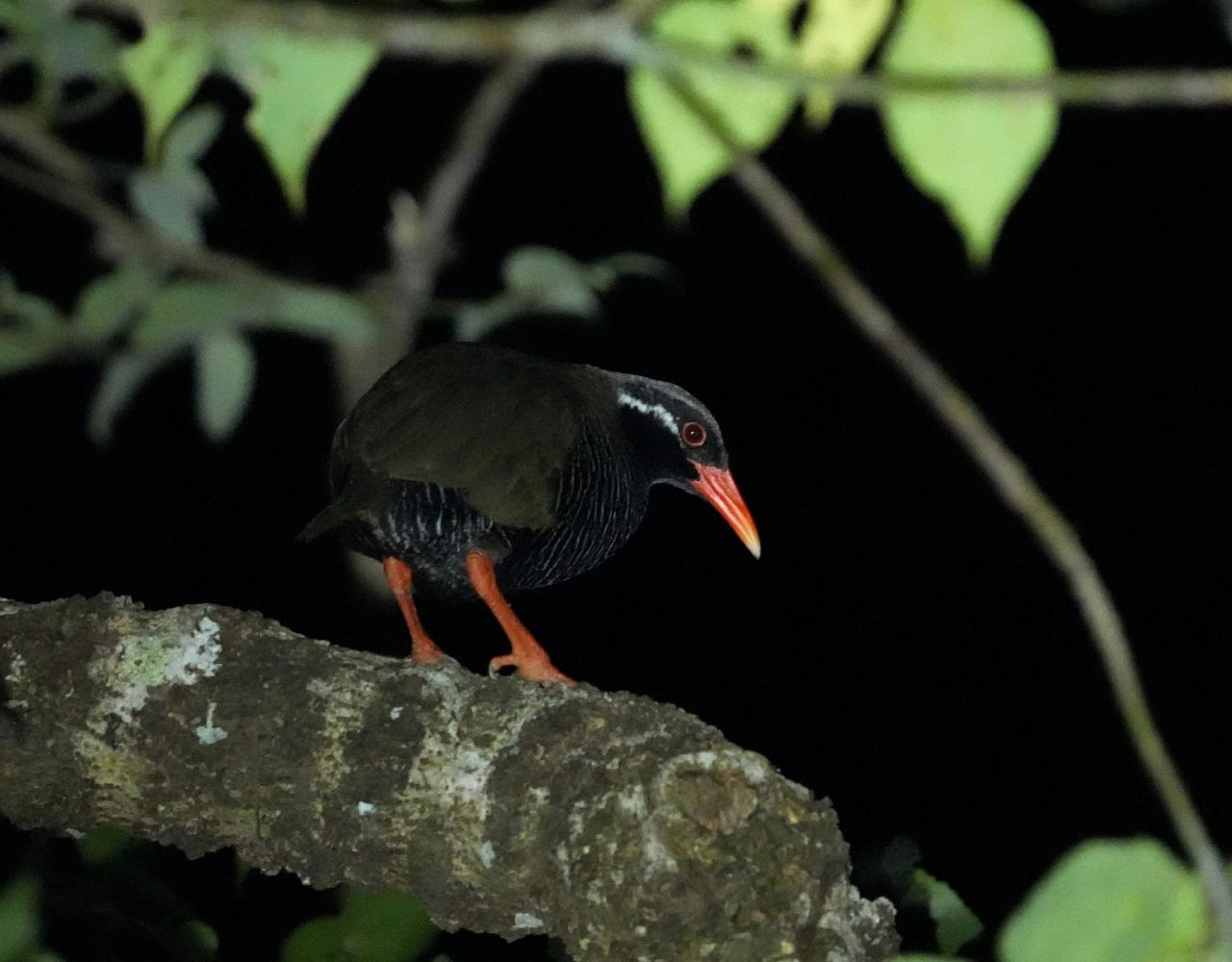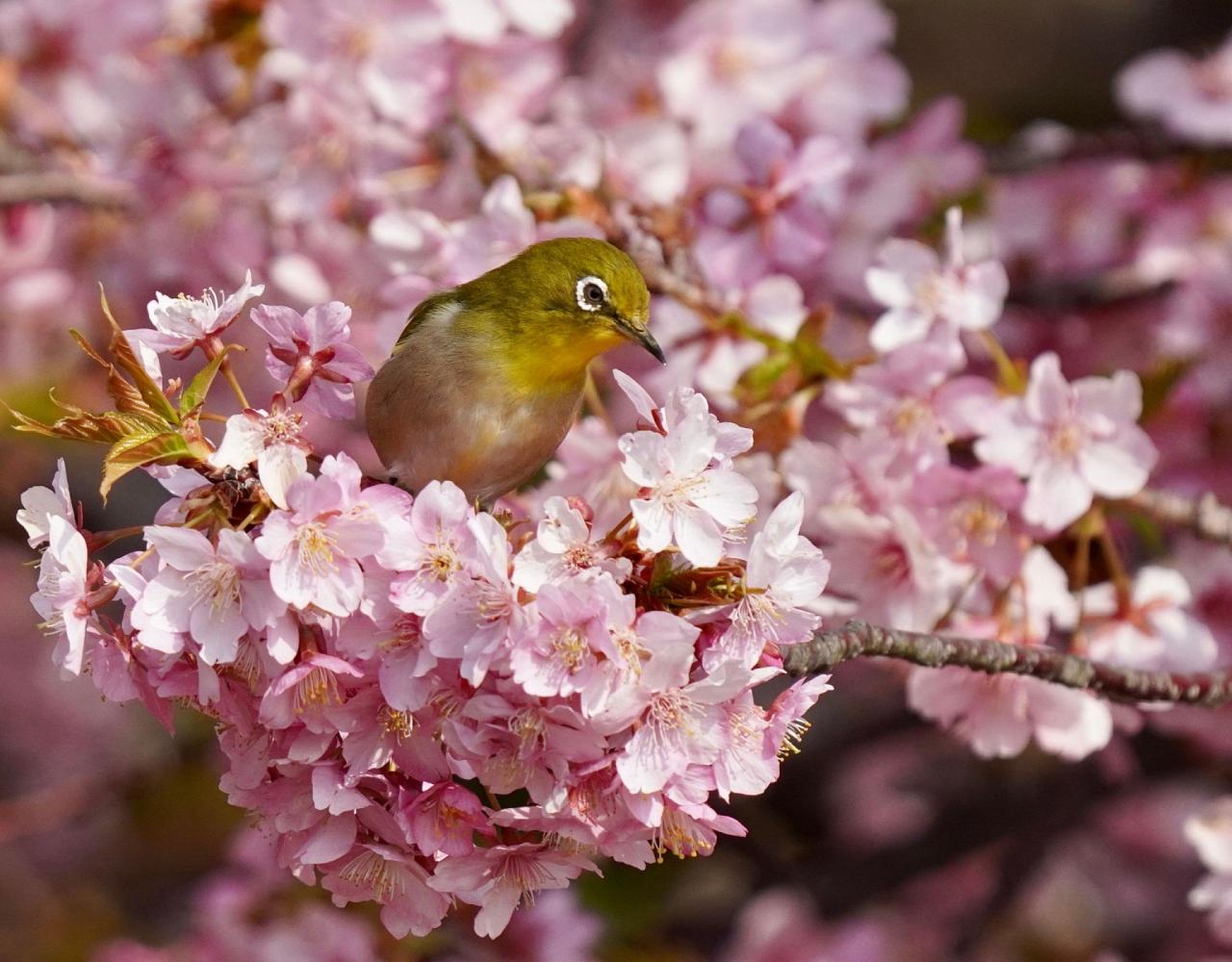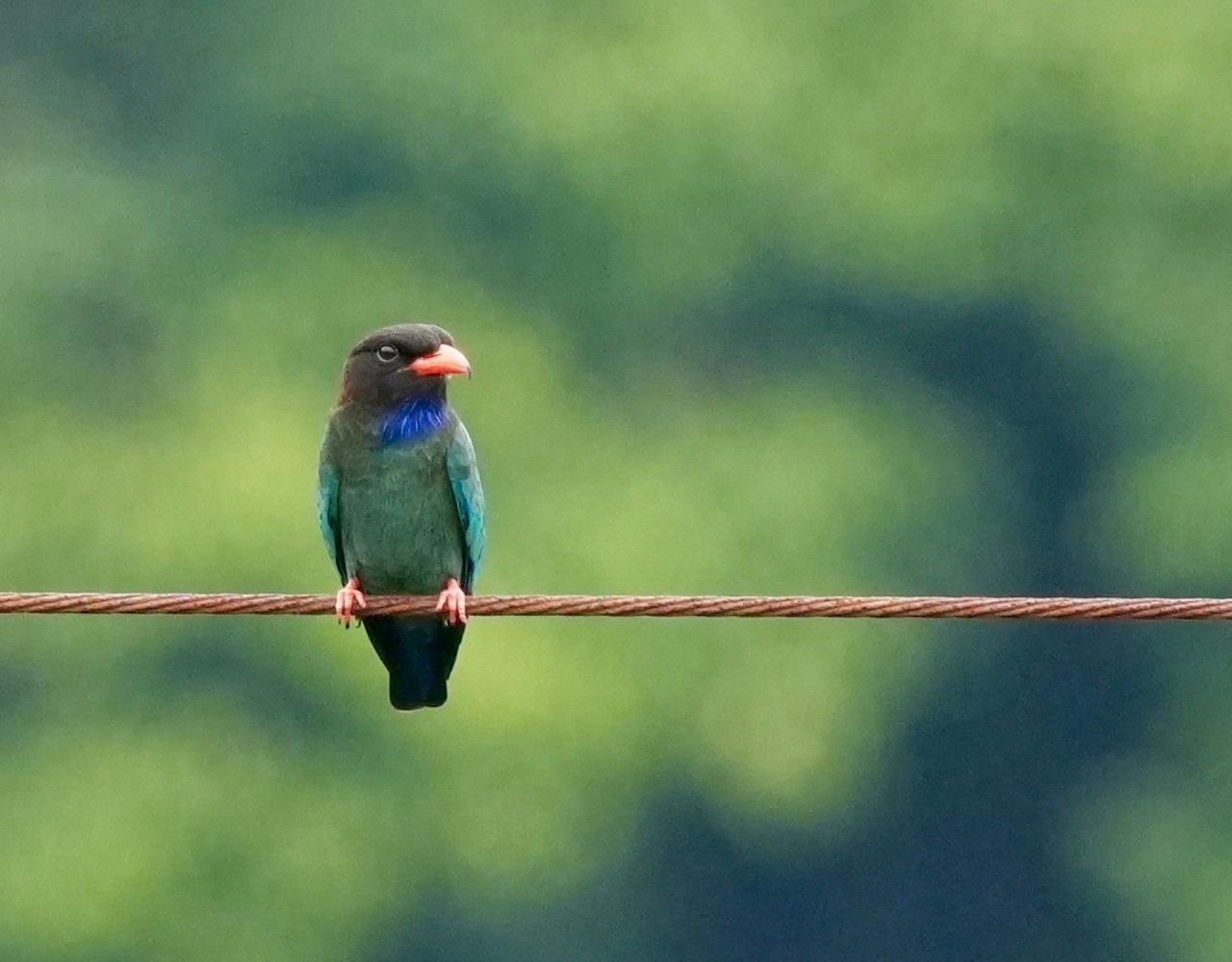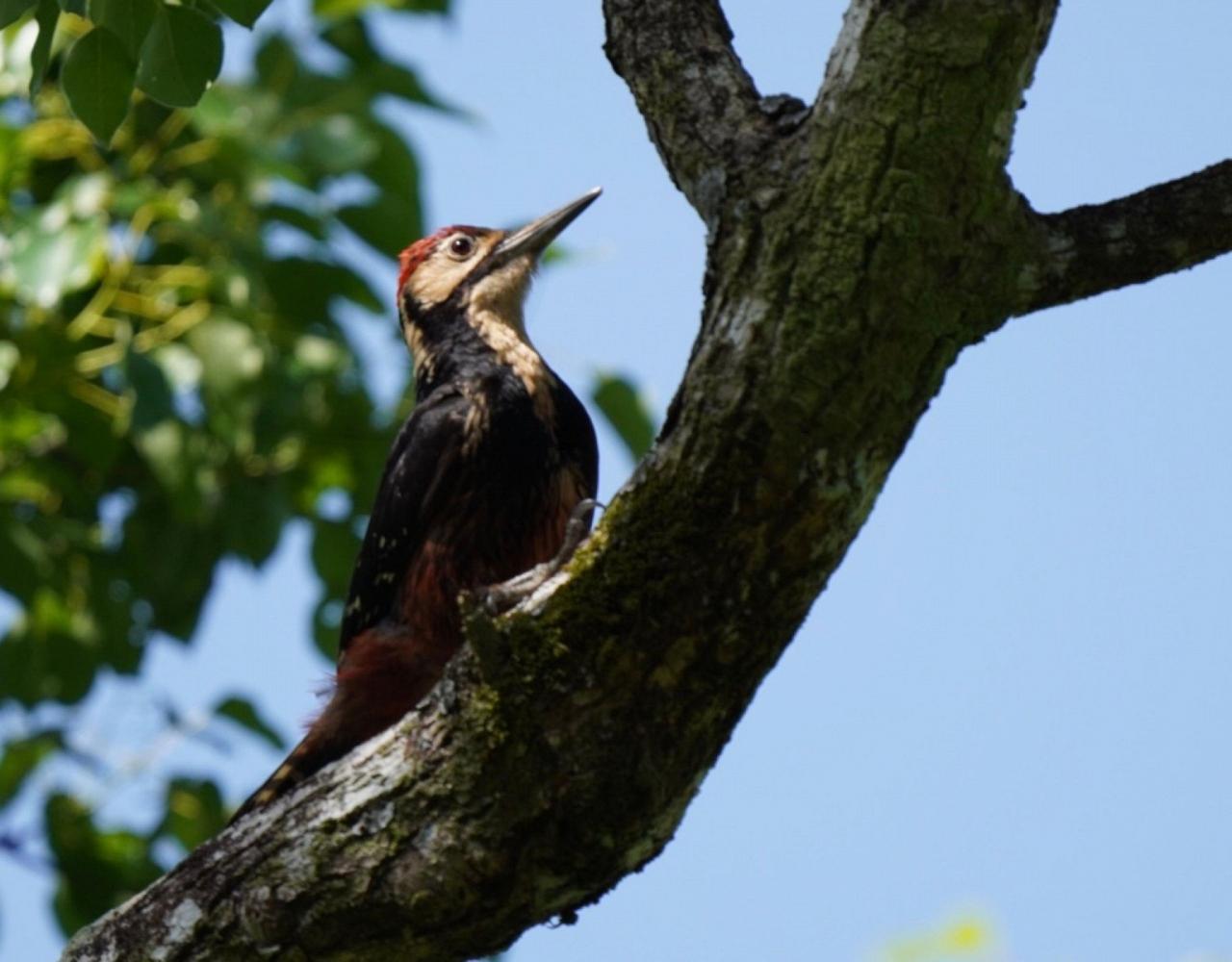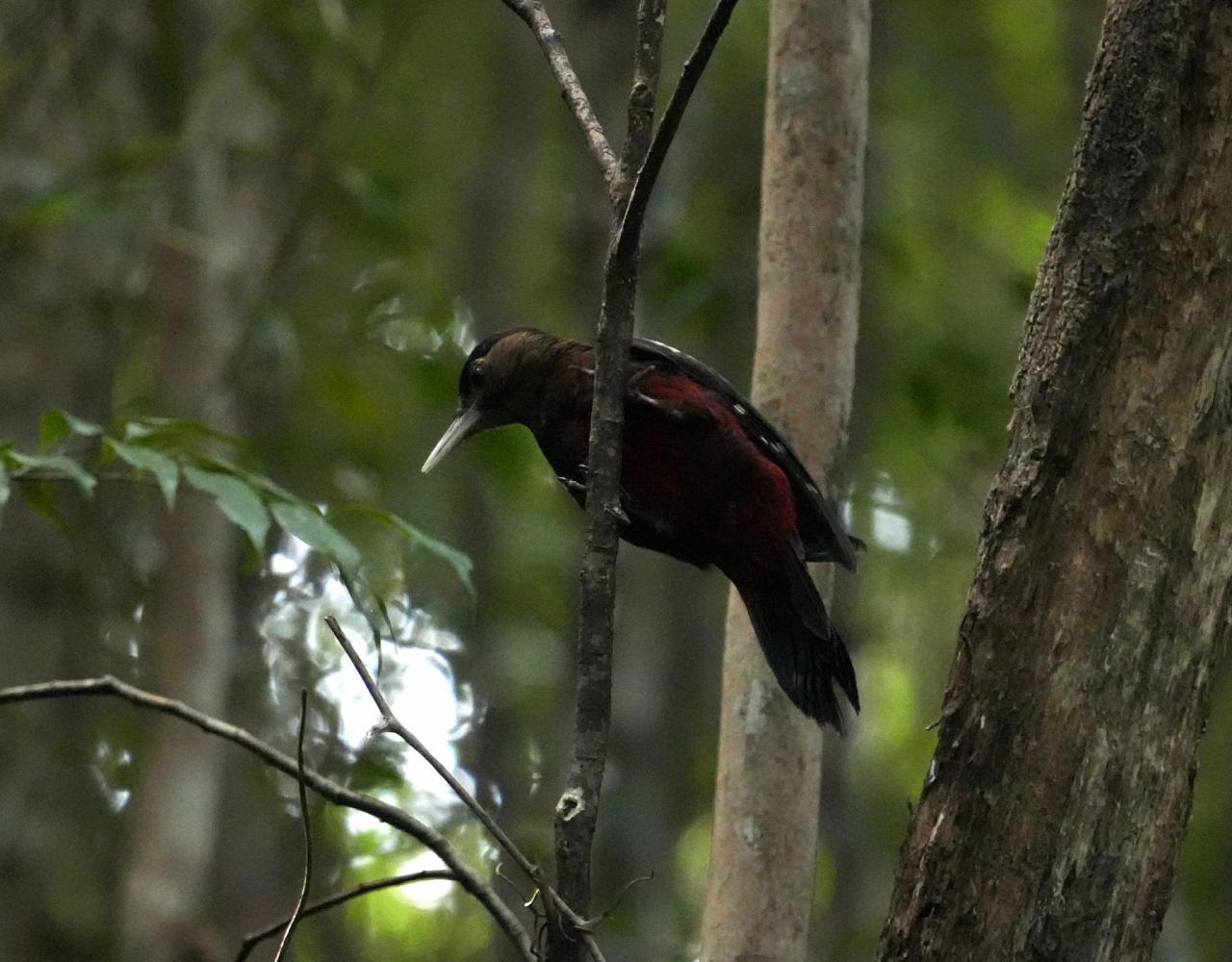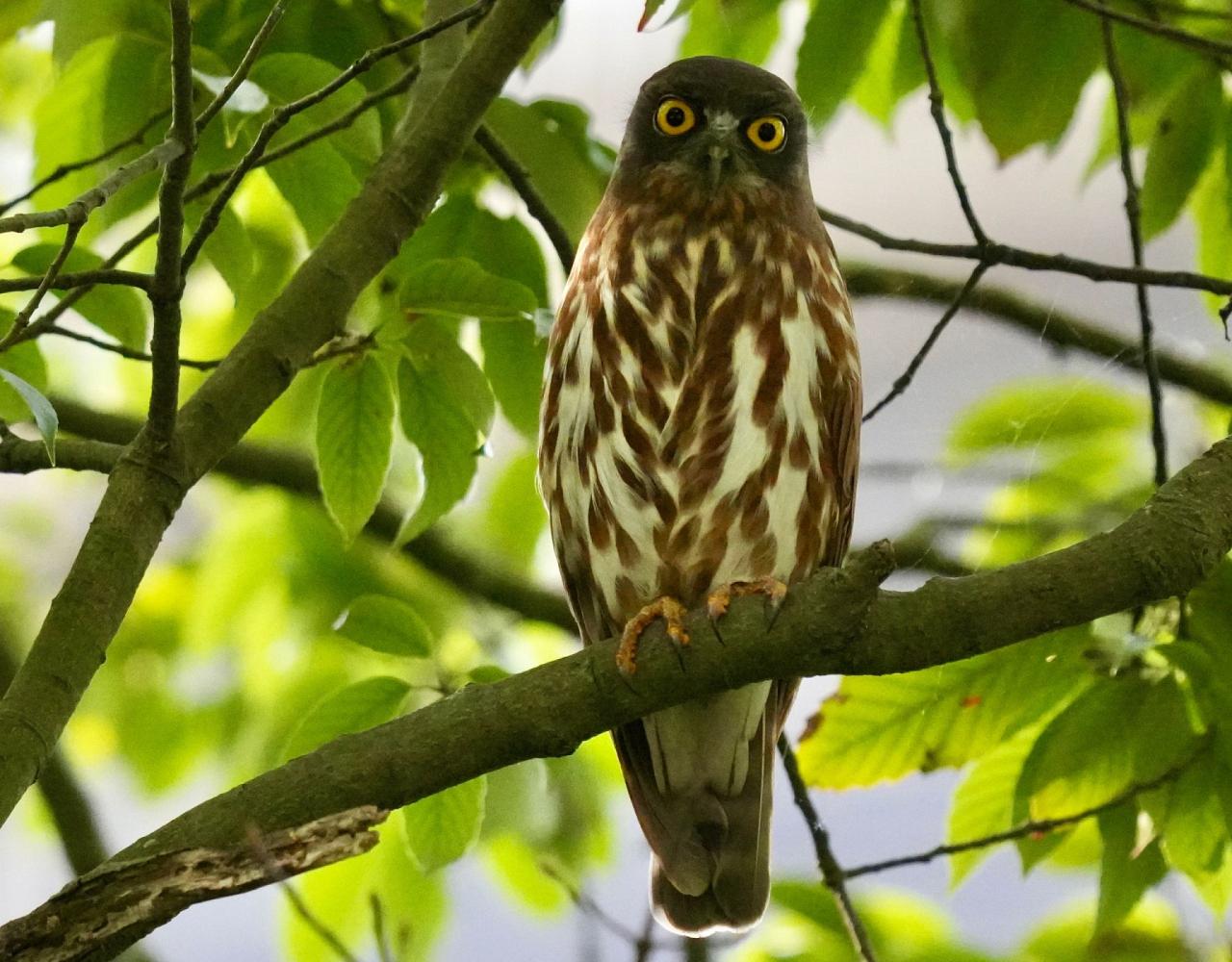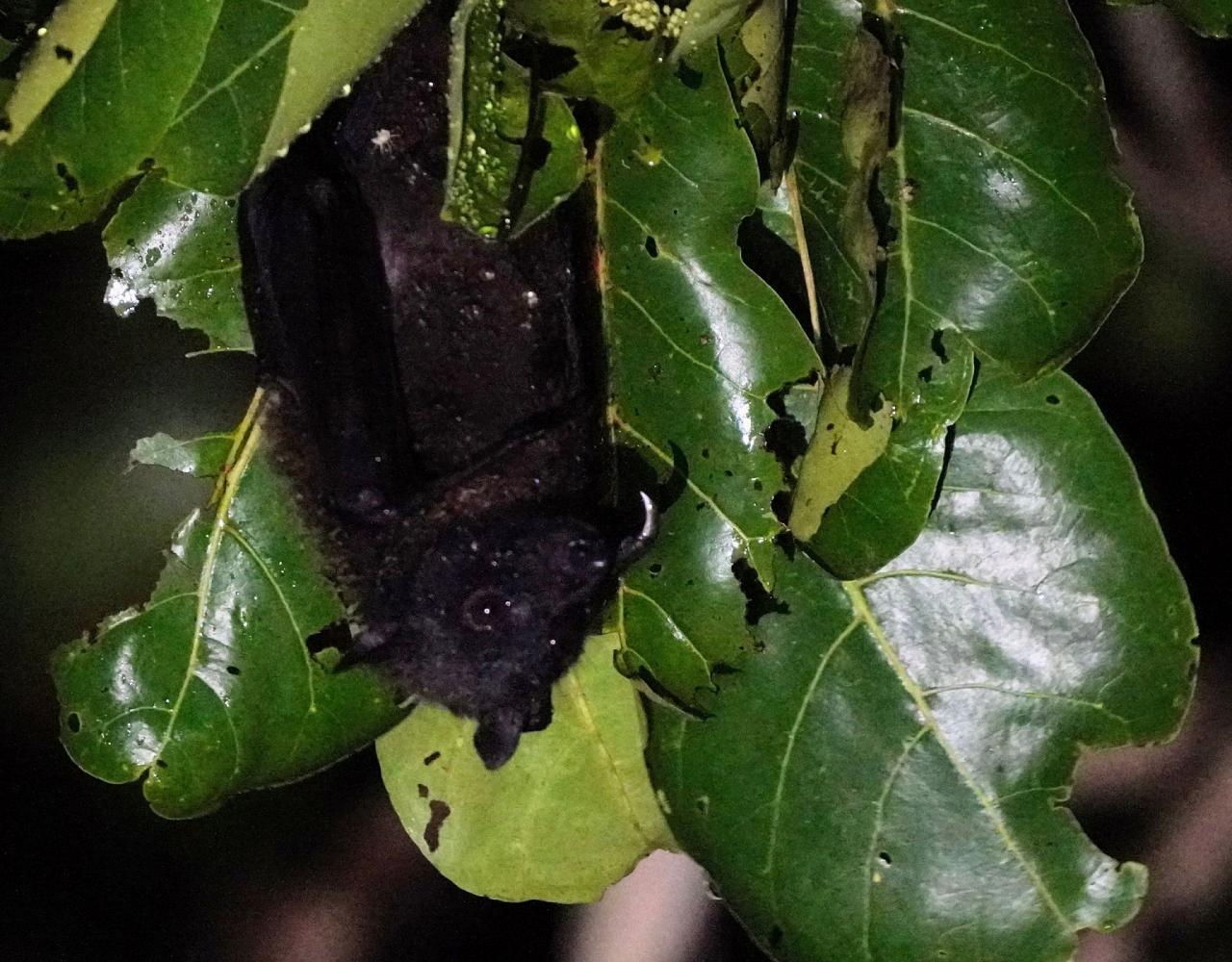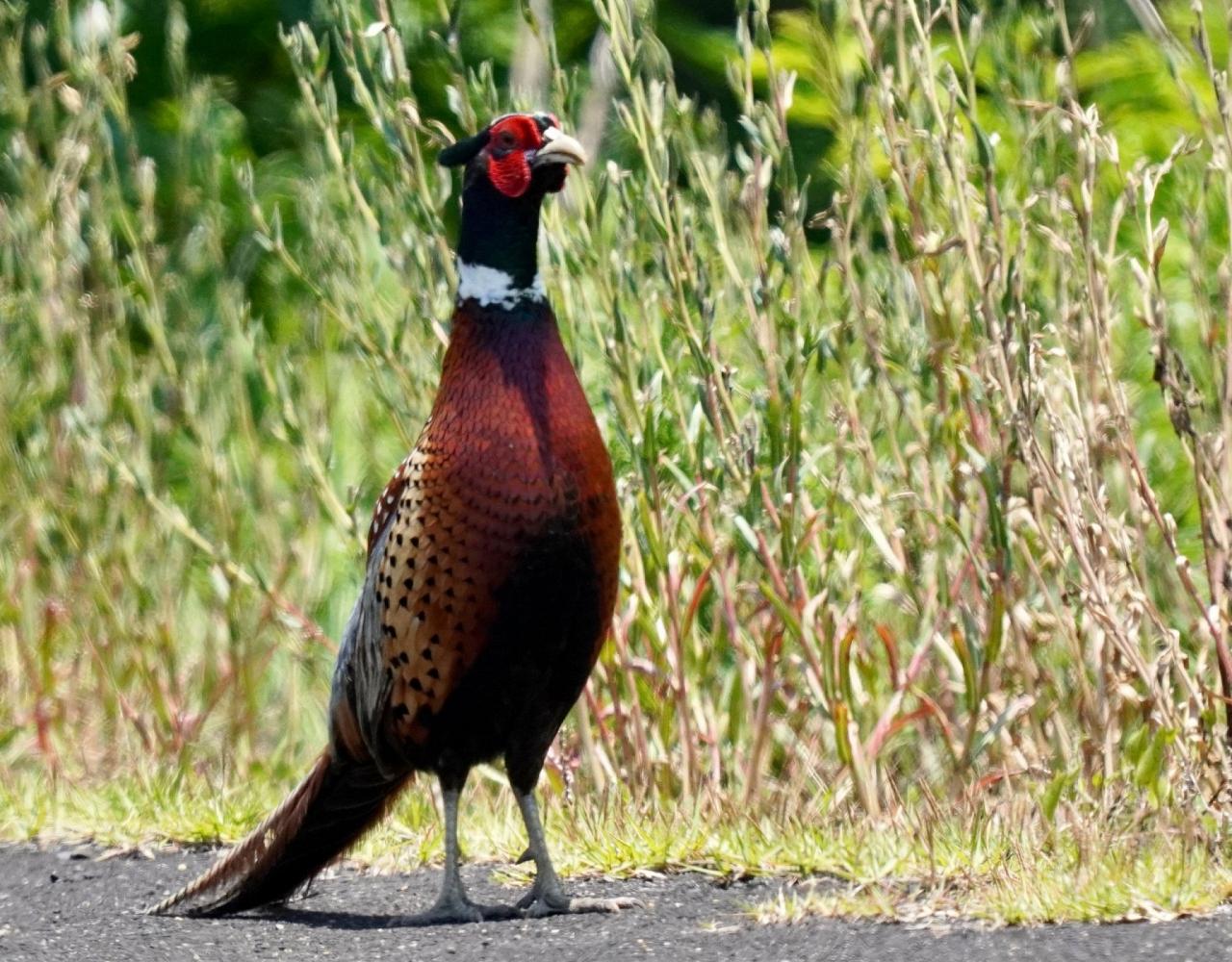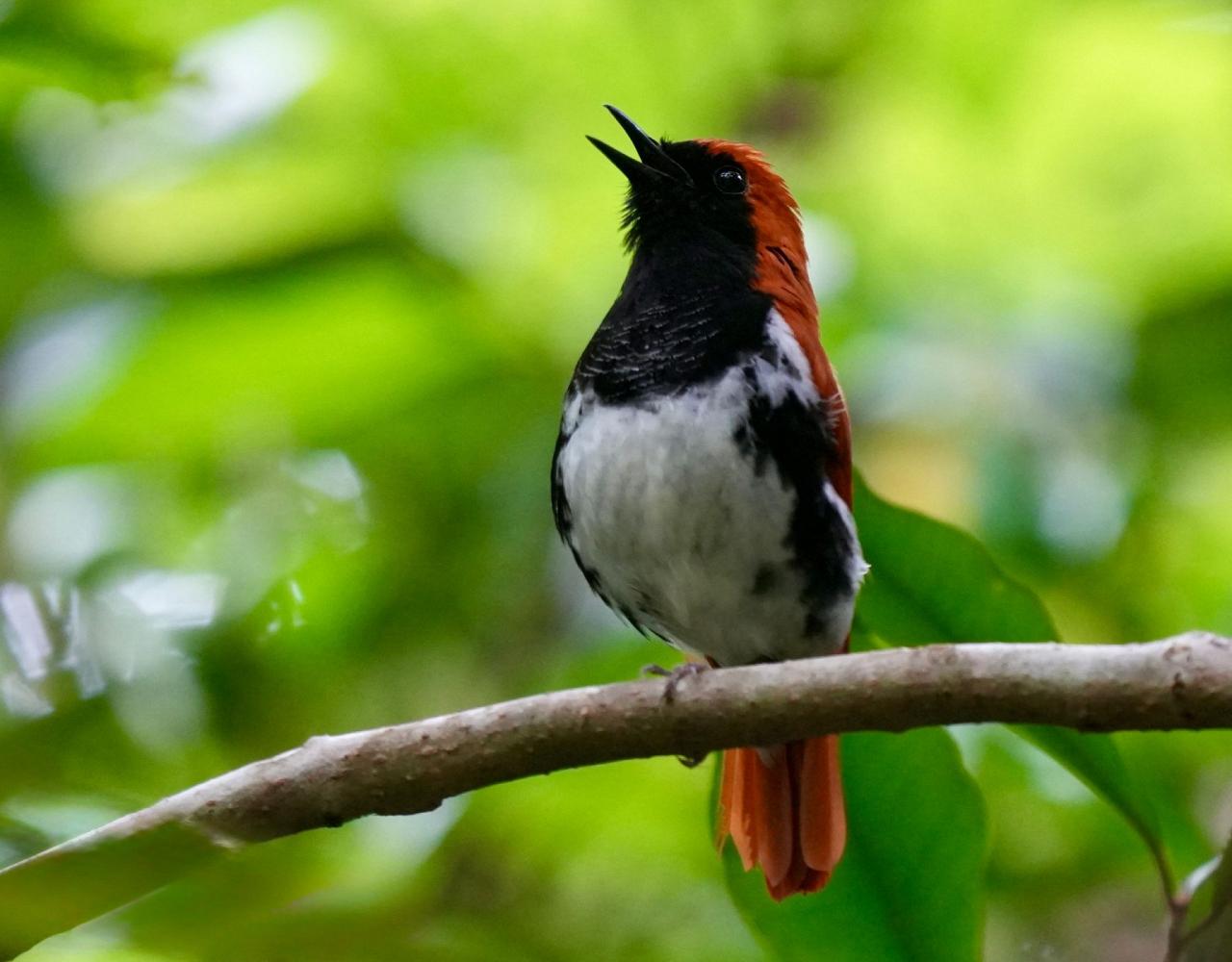NEW! We are excited to explore a new part of Japan with Bryan Shirley, our amazing guide so popular on our winter Japan and summer Hokkaido journeys. There is so much more to see in this incredible country! Experience lush sub-tropical islands at the edge of Eurasia, the southern-most extension of Japan, and the endemics they harbor. Our spring visit is timed to see resident and early migrants as they start to sing, display, and engage in nesting behavior; this tour is also timed well to witness the stunning displays of Japanese cherry blossoms—a special spring treat!
The third largest Japanese island, Kyushu, and the Ryukyu Islands of Amami and Okinawa, host an exciting array of endemic and near-endemic birds found in the midst of stunning mountainous landscapes surrounded by crystal clear waters and coral reefs. The very rare Japanese Murrelet, recently discovered and highly threatened Okinawa Rail, stunning Whistling Green Pigeon, secretive Amami Woodcock, Japanese Scopes Owl, Ryukyu Serpent Eagle, Lidth’s Jay, and Amami Thrush await our visit!
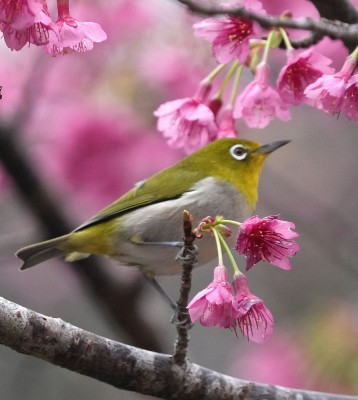
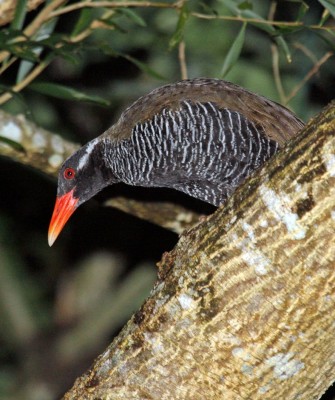
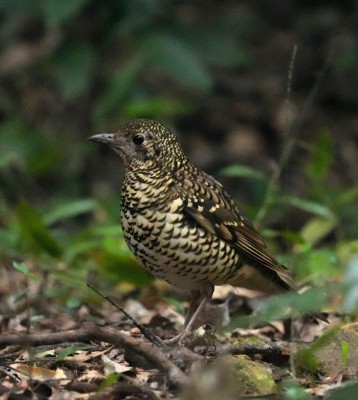
- “A good mix of nature and culture…Great that Bryan could explain the intricacies of Japanese life to us-would be difficult to negotiate without bilingual guides. Bryan made each person feel like he/she was his main focus. Really appreciated he and Koichi helping to make our son's trip special (the only one in the group below 40).” — Doris Gertler, 2023 Traveler
- “It would be hard to say enough good things about Bryan Shirley. He knows his birds and where to find them; he takes good care of his group members; he makes sure that everyone has seen the bird; he's friendly with the group and with the locals; and his knowledge of Japanese is extensive.” — Daphne Byron, 2023 Traveler
Tour Highlights
- Experience a completely different itinerary than the northern Japan winter tour
- Feast your eyes on iconic Sakura (Japanese cherry blossoms) in peak bloom, especially on the grounds of the renowned and recently rebuilt Kumamoto Castle
- Look for endemic bird species on subtropical islands Amami, home of Lidth’s Jan and Amami Thrush, and Okinawa, with Okinawa Rail, Okinawa Woodpecker, and Okinawa Robin
- Take a calm-water boat trip to see a striking island colony of the rarest alcid in the world: Japanese Murrelet
- View historic Buddhist shrines and rock carvings of the Buddha in one of the greatest centers of Buddhism in Japan on the sunny Kunisaki Peninsula
- Visit one of the most southern islands in Japan, just 150 miles from Taiwan, where Ryukyu Serpent Eagle, Asian Tit, Malayan Night Heron, and both White-shouldered and Red-billed Starlings are key finds
- Indulge in fabulous Japanese cuisine at a traditional Japanese Onsen (deep hot spring baths) hotel
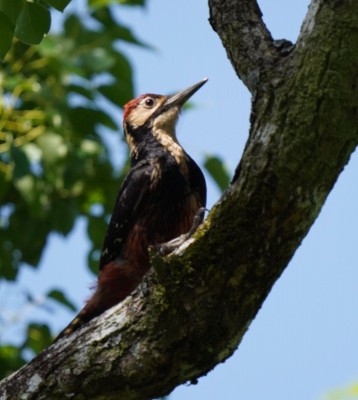
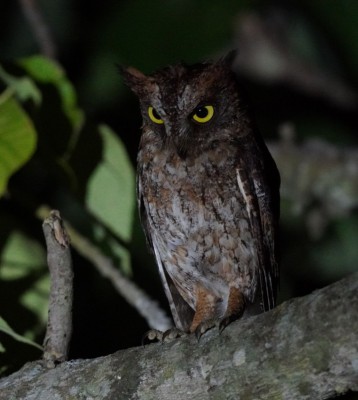
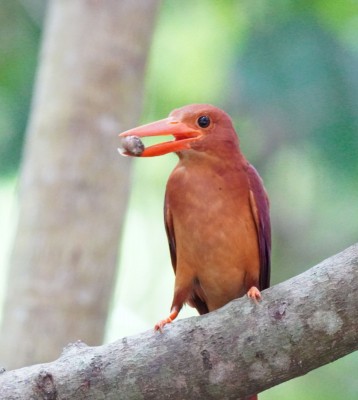
Trip Itinerary
Itineraries are guidelines; variations in itinerary may occur to account for weather, road conditions, closures, etc. and to maximize your experience.
Wed., Apr. 1 Welcome to Tokyo | Arrivals at Haneda International Airport (HND)
Welcome to Japan! Arrive at your leisure today. Our guide meets you at the Haneda airport after you clear customs and escorts you to the hotel. Tokyo has two airports, so be sure to arrive to this one. At a welcome dinner tonight, get to know our fellow travelers and guides. For anyone wishing to arrive early and have a day or two to relax or explore Tokyo before the tour, the hotel is easily accessible by train (1 stop) or taxi (about US$10) from the airport. There is a river a few minutes’ walk from the hotel for some birding, and within walking distance you can access the train into Tokyo for the day, where there are parks, museums, and cultural sites. We gather together as a group for our welcome dinner tonight where we get to know each other and learn about the days to come.
Accommodations in a hotel near the airport, Tokyo (D)
Thurs., Apr. 2 Flight to Oita | Explore the Kunisaki Peninsula
We take a morning flight to the rural city of Oita, on Kyushu, the southernmost of the four main islands of Japan. After we arrive and we meet up with our driver, we spend the rest of the day exploring the Kunisaki Peninsula.
Kunisaki is a volcanic peninsula overlooking the Seto Inland Sea, which separates the Sea of Japan and the Pacific Ocean. Made by a large shield volcano about twice the extent of Mt. Fuji, the peak of this old volcano is Mt. Futago, which had large eruptions for many thousands of years, before 12,000 years ago. Erosion of the old volcanic edifice has formed many, deep valleys radiating from the summit.
One of the greatest centers of Buddhism in Japan, the Kunisaki area is famous for the large number of shrines and rock carvings of Buddha and various other deities. This area is also a wonderful place to view Sakura (Japanese cherry blossoms) in the spring. The beginning of April is normally peak season for Sakura in this part of Japan and it should be spectacular.
While enjoying the flowers and scenery, we should get to see a pretty good mix of birds too, including Warbling White-Eye, Japanese Pygmy Woodpecker, Asian Tit, Varied Tit, Long-tailed Tit, and others. After our first field day, we settle in for the night at a traditional Japanese Onsen (hot spring hotel) and enjoy a fabulous Japanese dinner.
Accommodations in Kunisaki (B,L,D)
Fri., Apr. 3 Kunisaki Peninsula to Nobeoka
Today we spend the first part of the day exploring more of the picturesque and verdant Kunisaki Peninsula before we depart to make our way south. Depending on the Sakura bloom, and the latest bird information on possible sightings, we have a lot of options for stops as we make our way to Nobeoka to our hotel for the next two nights. Nobeoka is a very walkable city, filled with nostalgic architecture, traditional crafts, and views of stunning landscapes. Try Chicken Nanban, considered the local “soul food” of the city, a modern dish dating from the 1970s but still trending.
Accommodations in Nobeoka (B,L,D)
Sat., Apr. 4 Morning Quest to See Japanese Murrelet by Boat | Afternoon Wetland Birding
Today we aim to see a very special bird: the Japanese Murrelet. Japanese Murrelet is the rarest alcid in the world and the entire population is estimated to be between just 5,000 and 10,000 birds. They spend the non-breeding winter months out to sea, then in the spring return to breed on several small islands around Japan. The largest colony, with over half of the breeding population, is an island found off the coast south of Nobeoka.
Access to the island is strictly prohibited to protect nesting birds, but we have a boat trip to watch the murrelets feeding in the bays and along the coast. The boat trip lasts about two hours and normally the sea is very calm since we don't go too far out into the open ocean. Other birds we hope to see from the boat include Black-tailed Gull, Japanese Cormorant, Pacific Reef Heron, and more.
In the afternoon we visit a large mudflat and river estuary that should hold a good variety of early migrant shorebirds, herons, and other interesting birds before returning to our hotel in Nobeoka. This is a lush area and the river estuary is formed by the confluence of the Hori, Gokase, and Kita Rivers, where they flow into the Hy?ga Sea.
Accommodations in Nobeoka (B,L,D)
Sun., Apr. 5 Aso-Kuju National Park & Kumamoto
Today we travel across to the west side of Kyushu, eventually arriving at our hotel in Kumamoto, but we have a lot of exploring to do along the way. The first half of the day we spend exploring Aso-Kuju National Park. With a caldera circumference measuring nearly 60 miles, Aso Caldera is one of the largest active volcanoes in the world, and the focal point of the park’s Five Mountains of Asia. The caldera area was off-limits for several years due to high levels of dangerous gases, but the viewpoint just reopened in 2024.
While the upper portions of the national park are volcanic and nearly devoid of life, the lower areas of woods, grasslands, and farms host a wide variety of birds. White-backed and Japanese Woodpeckers are both resident in the forest here and stunning Japanese Grosbeak breed in the area. Many of the breeding migrants won't be back in Japan yet, but between the resident birds and early migrants, as well as the possibility of late wintering species, it should make for an interesting day.
In the afternoon we carry on to historic Kumamoto City to our hotel.
Accommodations in Kumamoto (B,L,D)
Mon., Apr. 6 Kumamoto Castle & Kumamoto Area
All of Japan is in an active volcanic area, part of the Ring of Fire. Kumamoto was hit by a 7.2 earthquake in 2016. The enchanting Kumamoto Castle, ranked one of the top-three best castles in Japan, suffered extensive damage and was closed for many years but recently re-opened to tourists. The grounds of the two-towered castle hold more than 800 Sakura trees and it is one of the best places to enjoy Sakura viewing in southern Japan. Offering one of the most complete castle experiences in Japan, Kumamoto encompasses a large variety of buildings and extensive grounds. The castle and the gardens are the highlight of the day, but we do bird at a couple of nearby parks as well.
Accommodations in Kumamoto (B,L,D)
Tues., Apr. 7 Morning Birding | Flight from Fukuoka to Amami | Amami Night Outing
Our birding location this morning is chosen by what we’ve seen so far on the tour and what birds are being reported. We fly from Fukuoka to Amami today, but since our flight is in the afternoon we have time to hit a spot or two this morning. Near the airport there is a good mudflat for shorebirds and waterbirds, or we have several mountain parks that are options as well.
We plan to arrive at the airport in the early afternoon and should be in Amami in time to get to our hotel before dark. Colloquially known as the “Galapagos of the East,” Amami was recently designated as a UNESCO World Heritage site due to the large number of endemic plants, animals, and birds found in its lush, subtropical forest (the designation also includes northern Okinawa, where we will be in a couple of days).
After we get settled at the hotel and have dinner, we have an optional night outing hoping to see some of the nocturnal species found here, including Amami Woodcock, Ryukyu Scops-Owl, and the endemic (and very short-eared) Amami Black Rabbit.
Accommodations in Amami (B,L,D)
Wed., Apr. 8 Amami Island
Located in the subtropical Ryukyu Islands, Amami is a rugged limestone island of ancient corals surrounded by mangrove forest, white beaches, living coral reefs, and crystal-clear seas. It is home to several species we look for today, including endemics like Lidth's Jay and rare Amami Thrush, which are only found on this island, and several other species like Ryukyu Robin and Whistling Green Pigeon, which are only on a few islands other than Amami. Besides the birds, there are endemic newts, frogs, gorgeous swallowtail butterflies, and lots of other things to keep us entertained. The turquoise blue ocean and forested mountains make for great scenery too!
Depending how we did on our night drive last night we may do another optional outing tonight for those that wish to join in.
Accommodations in Amami (B,L,D)
Thurs., Apr. 9 Flight from Amami to Okinawa | Yambaru National Park
Our activity today depends on our flight time to Okinawa, but while still on Amami we should have time to either bird in the forest if we missed any endemics yesterday or there is a very productive mudflat near the airport that is full of birds this time of year. Shorebirds could include Grey-tailed Tattler, Red Knot, Oriental Pratincole, and Sanderling … and perhaps other rarities.
The flight to Okinawa is about an hour, and from here we start the 3.5 hour scenic drive to the far north end of Okinawa to where we are based for the next two nights. Okinawa prefecture comprises more than 150 islands in the East China Sea between Taiwan and Japan’s mainland. It is known for its tropical climate, broad beaches, and coral reefs. The islands are home to a wide variety of flora and fauna, including many endemic species that live in coral reefs, mangrove forests, and subtropical evergreen forests. Okinawa is a birdwatching paradise due to its diverse habitats and unique ecosystem, which support a wide range of bird species, including rarities and endemics. The islands' subtropical climate nurtures resident birds while attracting migratory species from nearby regions throughout the year.
We hope to arrive in time to do some birding around the hotel. Our hotel is located in nice forest, so during breaks or downtime at the hotel there is always a possibility of seeing endemics while learning more about the area.
Accommodations in Yambaru National Park (B,L,D)
Fri., Apr. 10 Yambaru National Park & Northern Okinawa
Yambaru’s subtropical forests, mangroves, cliffs, and limestone mountains are home to rarities—both plant and birds. The highly threatened Okinawa Rail (only discovered in 1981), endangered Okinawa (Pryer’s) Woodpecker, and gorgeous Okinawa Robin are exciting endemic species we strive to see today. They can all be tricky to find, but this time of year, with spring activity and vocalizations high, we have an excellent chance of finding them all. There are also a few areas with rice and lotus fields nearby that we check this afternoon. Wetland habitat on these southern islands is very limited, so everything ends up in just a few areas with suitable habitat and can be great birding. Besides the waterbirds, there are some new passerine species such as White-vented Bulbul and Zitting Cisticola at the edges of the fields.
After dinner tonight we have another optional night drive looking for Okinawa Rail on perches, as well as Japanese Scops Owl.
Accommodations in Yambaru National Park (B,L,D)
Sat., Apr. 11 Yambaru, Kin Wetlands & Naha Area
This morning our field time focuses on finding the Okinawa specialties we may have missed the day before. In the afternoon, we make additional birding stops on our way back towards Naha.
High on our list is a stop at Kin, rich in nature and one of the most productive areas for wetland species. Roughly in the center of Okinawa Island, Kin has long been famous for its bountiful underground water supply. Taro is grown here and the flooded fields can be great for birding. It is not uncommon to be able to see Great, Intermediate (now called Medium), Little, and Cattle Egrets all in the same field. There should be lots of shorebirds as well.
Once we get to Naha, capital of Okinawa Prefecture, we have a few birding options and decide based on recent sightings.
Accommodations in Naha (B,L,D)
Sun., Apr. 12 Shuri Castle | Flight to Ishigaki Island
For centuries, Naha has been one of the most important sites on the island of Okinawa. This morning we visit the restored Shuri Castle, a UNESCO World Heritage Site. Used as a major command post by the Imperial Japanese military during WWII, the castle was almost destroyed by the US Military during the course of the war, but has subsequently been reconstructed. Due to the distance from Mainland Japan and proximity to China, Southern Japan has a very distinct culture. It was a separate kingdom, known as the Ryukyu Kingdom, and Shuri Castle was the home of the Royal Court until the Ryukyu Islands were annexed by Japan in the late 1800s. The difference between the traditional Japanese Castle in Kumamoto and Shuri is obvious—the latter looking much more like something from the forbidden city in China than a typical Japanese Castle.
After spending the morning exploring the castle, we head to the Naha airport for our one-hour flight to Ishigaki Island, our final destination.
Accommodations in Ishigaki (B,L,D)
Mon., Apr. 13 Exploring & Birding on Ishigaki Island
Ishigaki is one of the southern-most islands in Japan; in fact it is just over 150 miles to Taiwan. With a tropical rainforest climate and surrounded by coral reefs in pristine waters, it is a subtropical paradise. Being this far south and west compared to the rest of Japan also makes it a very exciting birding destination. Today we have a lot of great birds to look for! Split as a separate species by some authorities, the Ryukyu Serpent Eagle is one of the key finds here. The Asian Tit found here is a very distinct form and recognized as a species by most ornithologists as Ishigaki Tit. And this is the only island in Japan we can find Malayan Night Heron and both White-shouldered and Red-billed Starlings, with luck.
This evening we enjoy a classic and delicious Japanese dinner and recount the many highlights and favorite sightings of our journey to this exciting archipelago of southern Japan.
Accommodations in Ishigaki (B,L,D)
Tues., Apr. 14 Ishigaki | Return to Tokyo’s Haneda Airport
We have one last morning to explore Ishigaki before our tour comes to an end. Our flight today is scheduled to arrive in Haneda at 1:40 PM. That should give some options for international flights outbound after 5:00 PM on the many overnight flights, or you may opt for a night to relax or sightsee in Tokyo at your leisure before flying home. (B)
Cost of the Journey
The cost of the tour is per person, based on occupancy: $7990 DBL / $8790 SGL, from Tokyo. *Does not include required internal flights, estimated at $700 - $800 per person. This tour requires internal flights that our operator will book for you using the Japan Air Pass system. To book them we need a copy of your passport and your international flights. We want to keep the group together so we hope to have air booked not later than the end of August 2025.
Cost of the Tour Includes: Accommodations for 13 nights, meals as specified in the itinerary (B=breakfast, L=lunch, D=dinner), park entrance and other activity fees for activities as described in the itinerary, professional guide services, pre-departure materials and miscellaneous program expenses.
NEW! all tips other than your NJ guide (optional) and local guide are included (this includes tips for your driver, lodge and staff, day activities, meals and other services).
Cost does not Include: Round-trip airfare to and from Tokyo, Japan, or internal flights. It does not include items of a personal nature such as laundry, telephone, drinks from the bar; or gratuities for luggage handling or personal services.
Travel Details
Please plan to make air travel plans only after the minimum group size has been met. We will send you a confirmation email as soon as the trip has been confirmed.
Arrival and Departure Airport: Haneda International Airport (HND) in Tokyo
Arrival Details: Please plan to arrive on April 1, 2026, at your leisure
Departure Details: Please plan flights to depart April 14, 2026, after 5:00 PM
Travel Tips: If you arrive early we suggest booking an early night at our first night tour hotel, Metropolitan Tokyo Haneda. You can book online and send us your confirmation number, with the goal being you won’t have to switch rooms. Most clients use a taxi and it is about $15-20. You can also take the monorail one stop to Tenkubashi station, there are airport staff available to assist you when purchasing a ticket.
If you would like to book a different hotel, there are many options and it’s best to work with your travel agent to find something that best suits your needs. If you’d like to explore Tokyo, there are an endless number of things to see! The Anamori Inari Shrine is located behind the Metropolitan Haneda and is an early 19th century Shinto shrine that has dozens of fox statues. Other shrines worth visiting are the Asakusa Shrine, the most famous in Tokyo, and the Meiji Jinjgu Shrine, dedicated to Emperor Meiji and also located in a park with good birding. If you’d like to visit botanical gardens, the Hamarikyu Gardens are nice to walk around and can be good for birding, even in winter. Do you prefer museums? The Sumida Hokusai Museum features exhibits on the life and art of Katsushika Hokusai, recognized as one of Japan’s greatest artists. The Edo Tokyo Museum has exhibits on the history of Tokyo. The Tokyo National Museum is the oldest in Japan and has the largest collection of important cultural artifacts. And finally, if you really want to get an early start on your birding list, head over to Tokyo Port Wild Bird Park, a nature preserve next to Tokyo Bay.
Entry Requirements: See "Essential Information" section under the "Know Before You Go" tab.
Browse below for trip reports and species lists from past versions of this and other tours from this destination.
Japan
- January 2023
- December 2023
- January 2024
- June 2024 (Hokkaido)
-
Bryan Shirley
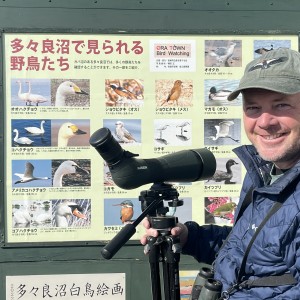
Bryan Shirley graduated from the University of Kentucky with a degree in Japanese/International Economics. He lived in Japan for 3 years when he was 20 and fell in love with the language and culture and has been guiding and birding there ever since. Besides guiding in Japan, he regularly leads tours for Japanese birding groups around the US and other countries. When not guiding he has been involved with various DWR and USFWS projects such as relocating Sage Grouse, breeding bird surveys, and bird-related projects for private environmental consulting firms. He also has volunteered his time to serve as president of Utah County Birders and organizes the annual Audubon Christmas Bird Counts for Provo and Payson, Utah where he currently resides. He currently is a member of the Utah Bird Records Committee.
Other trips with Bryan Shirley
-
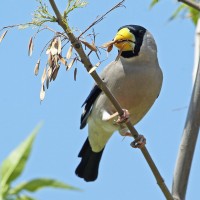 Japan in Spring: From the Ryukyu Islands to Hokkaido A private tour for friends of Carlos Sanchez.May 29 - June 12, 2025
Japan in Spring: From the Ryukyu Islands to Hokkaido A private tour for friends of Carlos Sanchez.May 29 - June 12, 2025 -
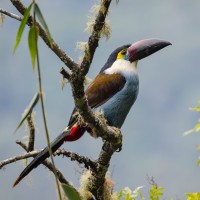 Birding from Bogota Only two spaces left!July 28 - August 3, 2025, w/Chingaza National Park extension
Birding from Bogota Only two spaces left!July 28 - August 3, 2025, w/Chingaza National Park extension -
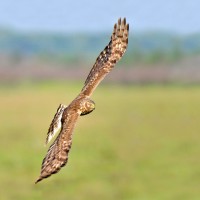 Nevada's Great BasinAugust 27 - September 3, 2025
Nevada's Great BasinAugust 27 - September 3, 2025 -
 South Africa: Birding & Wildlife Safari Only two spaces left!September 16 - 30, 2025
South Africa: Birding & Wildlife Safari Only two spaces left!September 16 - 30, 2025 -
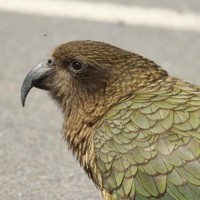 Birds & Nature of New ZealandOctober 8 - 24, 2025
Birds & Nature of New ZealandOctober 8 - 24, 2025 -
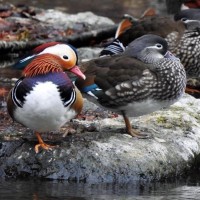 Japan Birding & Nature December 1 - 17, 2025
Japan Birding & Nature December 1 - 17, 2025 -
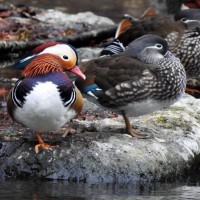 Japan Birding & Nature A private tour for friends of Andrew Mackie.January 7 - 23, 2026
Japan Birding & Nature A private tour for friends of Andrew Mackie.January 7 - 23, 2026 -
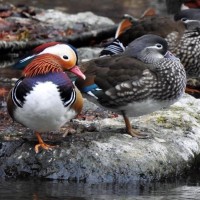 Japan Birding & Nature January 7 - 23, 2027
Japan Birding & Nature January 7 - 23, 2027
-
Essential Information +
Pace & Protocols +
Packing List +
Suggested Reading List +
Useful Links +
Photo credits: Photos By Bryan Shirley and Takumi Kiochi Banners: Roseate Tern, Dollarbird, Japanese Murrelet, Warbling White-eye, Blue-and-white Flycatcher, Black Paradise-Flycatcher Thumbnails: Warbling White-eye, Amami Thrush, Red-flanked Bluetail, Okinawa Rail, White-backed Woodpecker, Ryuku Scops Owl, Ruddy Kingfisher







